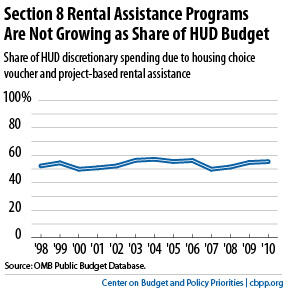off the charts
POLICY INSIGHT
BEYOND THE NUMBERS
BEYOND THE NUMBERS
Improving the “Section 8” Rental Assistance Programs
Receive the latest news and reports from the Center
The federal “Section 8” rental assistance programs — the Housing Choice Voucher and Project-Based Rental Assistance programs — have long received strong bipartisan support in Congress, and studies by the Government Accountability Office, the Department of Housing and Urban Development (HUD), and others have found the voucher program in particular to be a cost-effective way to help low-income families afford decent-quality housing.

All the same, Congress and HUD can and should take steps to make Section 8 even more cost-effective without reducing rental assistance for needy families. Specifically, Congress should:
Some 3.3 million low-income families rely on the Section 8 programs to afford modest rental housing. More than half of these families include people who are elderly or have disabilities; the rest are mostly families with children. On average, these families have incomes of just $12,000, well below the poverty line (of $18,530 for a family of three and $22,350 for a family of four) — and many would be homeless without rental assistance. By taking the two steps above, Congress can alleviate cost pressures in Section 8 and help sustain these critically important programs.